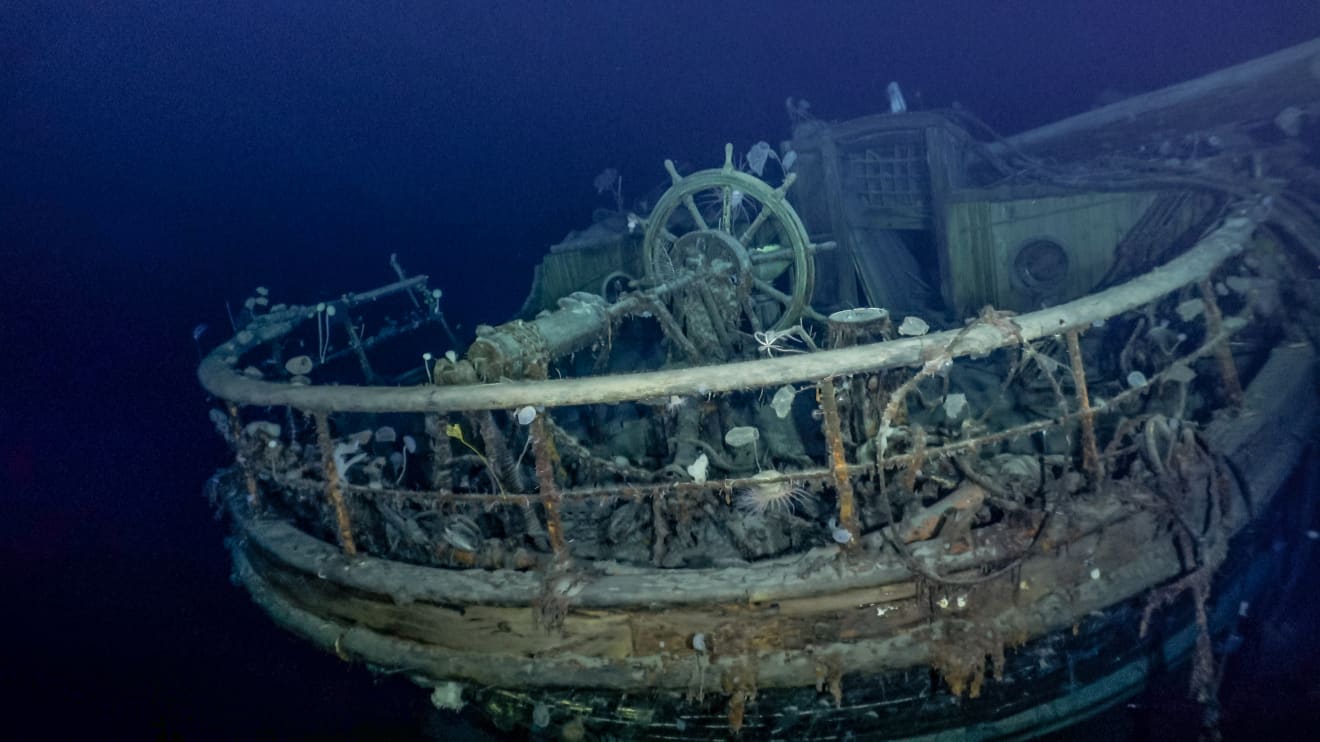This post was originally published on this site
There’s big news from the bottom of the world: Ernest Shackleton’s ship, Endurance, has been discovered 100-plus years after it sank.
In 1915, Shackleton, the famed Irish-born explorer of the Antarctic, had to abandon the vessel when it became trapped in pack ice. The ship eventually fell to the seafloor, but Shackleton and crew survived and found their way back to civilization, itself a remarkable odyssey that continued for months on end.
Now, a team of adventurers and marine archaeologists has found the ship at the bottom of the sea — the Weddell Sea to be exact. It’s being hailed as a major discovery: “This was possibly the greatest historic shipwreck still out there,” says Laurie Gwen Shapiro, an author who researched Antarctic exploration for her book, “The Stowaway.”
So, what makes Shackleton and Endurance so significant? And how was the ship discovered? Read on to find out.
Who exactly was Shackleton?
Sir Ernest Henry Shackleton (1874-1922) was one of the legendary figures behind what’s known as the Heroic Age of Antarctic Exploration — a period when men set out to reach and explore the frozen continent. Shackleton made three expeditions — the first was in 1907-09 and the last in 1921-22. He can’t claim the honor of being the first to reach the South Pole — that was achieved by the Norwegian explorer Roald Amundsen in 1911. But his initial expedition had set new ground at the time in traveling the farthest south on the planet.
What happened on Shackleton’s ill-fated second expedition?
Shackleton envisioned this sojourn, dubbed the Imperial Trans-Antarctic expedition, as a major one that would incorporate the first land crossing of Antarctica. The trip aboard his ship, Endurance, started on Dec. 5, 1914 from South Georgia island, but in February 1915, the expedition ran into trouble when the vessel got stuck in icy waters.
Shackleton and his men, a crew of 27, hunkered down for months — the South Pole winter is during our summer — but the situation became hopeless as ice hit the vessel and water eventually poured in. Shackleton had to order his men to abandon ship on Oct. 27, 1915, with the boat sinking sometime later. From there, the Endurance team camped on the ice and employed numerous measures to make it to safe ground, which happened in 2016. Shackleton didn’t return to England, his home country, until 1917.
How was the Endurance found?
Through a lot of effort, to say the least. This was an expedition, appropriately called Endurance22, that cost more than $10 million, according to the New York Times, and was undertaken through the Falklands Maritime Trust. The polar research vessel, S.A. Agulhas II, was essentially the “base” for the expedition, but battery-powered submersibles were employed to search the seafloor for Endurance, which was found at a depth of almost 10,000 feet.
The Times described the process as follows: The submersibles “used sonar to scan a swath of the smooth seabed, looking for anything that rose above it. Once the wreck was located several days ago, the equipment was swapped for high-resolution cameras and other instruments to make detailed images and scans.”

Another view of the recently discovered Endurance
Falklands Maritime Heritage Trust and National Geographic
How did the Endurance team react to their discovery?
Needless to say, they were overjoyed. “We have made polar history with the discovery of Endurance, and successfully completed the world’s most challenging shipwreck search,” said expedition leader Dr. John Shears in a statement.
Mensun Bound, the expedition’s director of exploration, added his thoughts in another statement: “We are overwhelmed by our good fortune in having located and captured images of Endurance. This is by far the finest wooden shipwreck I have ever seen.”
So the vessel is in good shape?
Very much so, as the photographs taken by the Endurance22 team indicate. It all has to do with the fact things are pretty cold at the bottom of the sea in that part of the world. In other words, no wood-eating organisms are around to feast upon a sunken ship for dinner.
What will happen to Shackleton’s ship?
The Endurance22 team told MarketWatch the vessel will stay where it is and no items will be removed from it. The reason? The ship is protected by the Antarctic Treaty as a historic monument — it’s sacred “ground,” so to speak, even if it’s at the bottom of the sea. In a press release, the Endurance22 team said, “(W)hilst the wreck is being surveyed and filmed it will not be touched or disturbed in any way.”
But even if we won’t ever see Endurance in person, we will be learning more about it soon: A National Geographic documentary is in the works, according to Endurance22.

